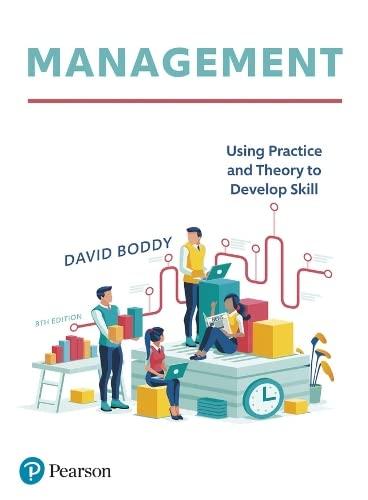Question
Read the Case study: Cisco Systems, Inc.: Acquisition Integration for Manufacturing (A) (HBS #9-600-015) http://masterclassfall2009.cisevents.hightechcampus.nl/system/files/images/Entrepreneurship-and-Open-Innovation/Chesbroughcase_Cisco.pdf Identify the internal characteristics of the company. What gives the
Read the Case study:Cisco Systems, Inc.: Acquisition Integration for Manufacturing (A) (HBS #9-600-015)
http://masterclassfall2009.cisevents.hightechcampus.nl/system/files/images/Entrepreneurship-and-Open-Innovation/Chesbroughcase_Cisco.pdf
Identify the internal characteristics of the company. What gives the firm an advantage over its competitors?
What are the tangible and intangible resources that the firm has?
How does the financial strength of the firm stack up against other firms in the industry? Other potential competitors?
What core capabilities and core competencies give the firm a competitive advantage?
Identify the key strengths and weaknesses apparent from your internal analysis.
How do the strengths and weaknesses compare to the threats and opportunities apparent in the environment?
Once you have evaluated the case, identified the strategic problem, and evaluated the impact of the problem on current and/or future strategy, you must form some conclusions and recommendations regarding the future position of the company. Support your evaluation with appropriate research.
What alternatives can the company consider? Alternatives should be mutually exclusive. Mutually exclusive means the company can go down only one road. It cannot pursue both strategies simultaneously.
What are the tradeoffs associated with the alternatives? You should NOT think in terms of good versus bad, but rather what does the company GAIN from an alternative and what does it LOSE. That way you can compare gains and losses across the alternatives. Gains and losses may be in terms of customers, revenue, cost competitiveness, market share, profitability, core competence, time to market, future growth, survival, etc.
Select an alternative to recommend. Make a logical, clear, and integrated argument, backed by research to support why the gain and loss tradeoff from this alternative is better than the other alternatives.
Recommendations should be made only if backed by analysis and logic. Trivial or unrealistic recommendations or recommendations that are inconsistent with the firms goals, resources, the industry environment, and the culture of the company must be avoided.
Step by Step Solution
There are 3 Steps involved in it
Step: 1

Get Instant Access to Expert-Tailored Solutions
See step-by-step solutions with expert insights and AI powered tools for academic success
Step: 2

Step: 3

Ace Your Homework with AI
Get the answers you need in no time with our AI-driven, step-by-step assistance
Get Started


